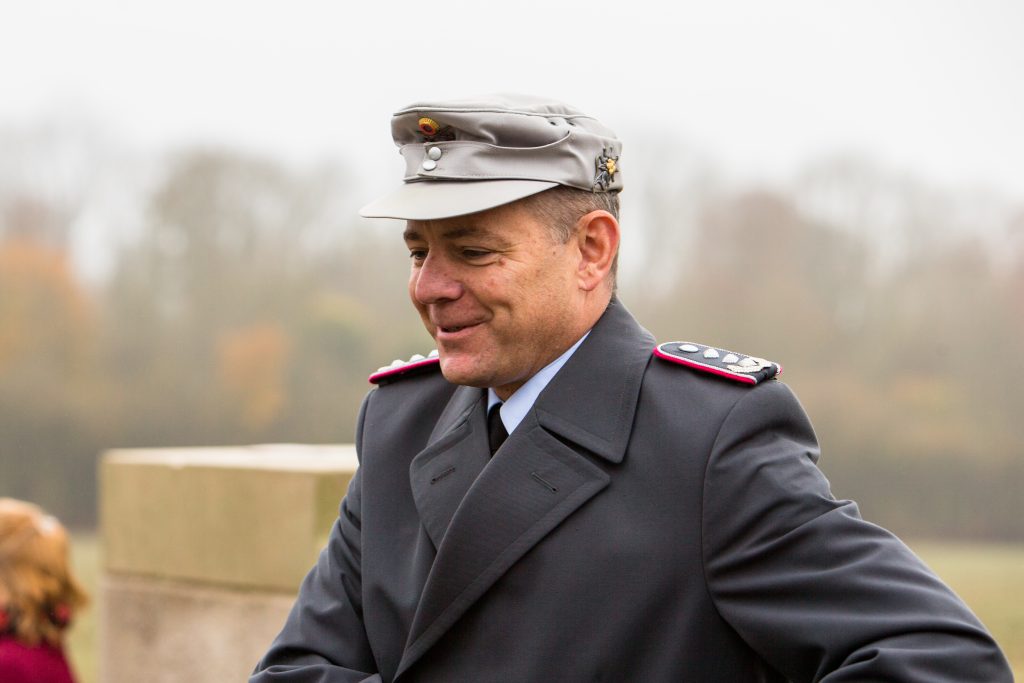
Ulster Tower Centenary Commemorated in France
Photos by John O’Byrne
Updated 13:07, 24 November 2021
The centenary of the Ulster Memorial Tower was commemorated this morning in Northern France.
Inaugurated on 19 November 1921, the Ulster Tower at Thiepval on the Somme commemorates the sacrifice of soldiers from Ulster and across the island of Ireland during the First World War. The Ulster Tower stands on the ground attacked at great cost by the 36th (Ulster) Division on the first day of the Battle of the Somme on 1 July 1916.
This morning’s commemoration was attended by dignitaries including First Minister of Northern Ireland Paul Givan MLA, Ireland’s Minister of State Department of the Taoiseach and the Department of Foreign Affairs and Trade with responsibility for EU Affairs Thomas Byrne TD, British Ambassador to France Her Excellency Menna Rawlings and Counsellor at the Irish Embassy in Paris Owen Feeney. The service was led by Rt. Rev. Dr. David Bruce, Moderator of the Presbyterian Church in Ireland; Rev. Dr. Sahr Yamhasu, President of the Methodist Church in Ireland; and The Most Revd. Francis John McDowell, Archbishop of Armagh.
The ceremony was supported by the Bugles, Pipes and Drums and the Regimental Band of the British Army’s Royal Irish Regiment and by the 2nd Brigade Band of the Irish Defence Forces. The military musicians were accompanied by mezzo-soprano and alto Emma Brown who sung You’ll Never Walk Alone.
Following the ceremony First Minister Mr. Givan said: “It’s an honour for me to be here today on this historic occasion to mark 100 years of the Ulster Tower which memorialises the sacrifice that was made by the men of the 36th Ulster Division and remembers those who served from right across Ireland in the First World War.”
“The connections with the Ulster Division and the Irish Division is something that we always need to remember, where people stood side by side irrespective of their religion or indeed their identity, whether they were British or Irish, they shed blood together here in the trenches and stood in common cause for the freedoms that we enjoy today.”
Reiterating the importance of today’s commemoration Minister Thomas Byrne stated: “It is an honour to be here at the Ulster Tower. It is essential that we commemorate all those who died in battle during World War One, knowing that the soldiers that are commemorated here are from all nine counties of Ulster and many are from across the island of Ireland North and South fought in World War One and died in World War One. It is critical that we continue to honour their memories and to work always for peace and reconciliation both at home and indeed across the globe.
Today’s event was organised by the Somme Association, based in Newtownards, County Down, who are responsible for the maintenance of the Ulster Tower.

As the combined Royal Irish Regiment and Defence Forces bands marched from the Ulster Memorial Tower at the end of the centenary commemoration last week to the tune of On Raglan Road, it was a moment to reflect on the importance on the occasion. The Ulster Memorial Tower stands tribute to those from the province of Ulster, in particular to members of the 36th Ulster Division, who fought during the Great War and especially those who made the ultimate sacrifice. Today it is sacred ground.
Ulster Tower Centenary Album


















































































































































































































































































































